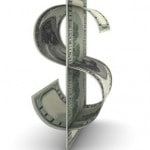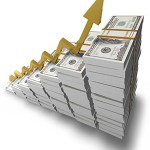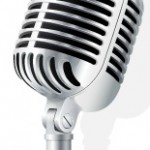Poor Auto Sales Today Mean A Brighter Tomorrow
 Growth in satellite radio is coming from the OEM channel. This has been the case for quite some time, and despite having more installations than ever before, the fact that car sales are down weighs on the investors psyche. The perception is that poor auto sales result in bad times for SDARS.
Growth in satellite radio is coming from the OEM channel. This has been the case for quite some time, and despite having more installations than ever before, the fact that car sales are down weighs on the investors psyche. The perception is that poor auto sales result in bad times for SDARS.
One silver lining in this whole situation is that there will be a slingshot effect at some point in the future, and satellite radio will benefit from it. Think about it this way. People are watching expenses a bit more than they were a year ago. People are stretching another year or two out of their cars. They can not stretch it forever though. At some point, they will be new car buyers again. It is only natural that a lull in sales will be followed by a boost in sales.
Perhaps the best example of this happened in 2005. GM offered an “Employee Discount” promotion in the second and third quarter. The promotion was very popular, and GM car sales boomed. At the time I made the statement that the good times in Q2 and Q3 of 2005 would be followed by lean times in Q4 2005 and Q1 2006. Some felt I was crazy, but in the end the numbers illustrated that I was correct in my thinking. My thoughts were that the sales promotion brought people into car dealerships earlier than they might have otherwise come, and because they came early, it would draw away from sales later in the year. That is exactly what happened.
Auto sales are off by about 12% from last year. The same type of dynamic that GM went through in 2005 will happen again with slumping sales now turning to positive sales at a point in the future. At some point there will be a swing back towards positive territory, and in my opinion this swing will be fueled by four factors:
- Automakers making more fuel efficient cars at a price point and with options that consumers want.
- Steep discounts on the remaining of the big vehicles such as SUV’s and trucks, fueled by gas getting to more reasonable levels.
- Consumers being between a rock and a hard place and wanting to trade in before too many miles get onto the cars they decided to hold onto for longer than they otherwise would have.
- The economy stabilizing and consumers gaining confidence.
We have seen the 12% decline in auto sales in 2008. Meanwhile, satellite radio installations continue to move upwards. Currently there are estimates that 50% of automobile production gets satellite radio. Consider 15,000,000 as the average year for car sales. That would put 2008 auto sales on a pace for 13,200,000. Fifty percent installation would put the number of satellite radio equipped cars at 6,600,000.
Now if we look at things returning to the normal 15,000,000 vehicle pace with 2009, and we see a deeper installation rate of 60%, then the satellite equipped cars in 2009 would be at 9,000,000. That represents a 2,400,000 increase in satellite equipped cars. Better still, by that point costs will be lower, and the merger will deliver a more unified SDARS platform.
This will take some time to play out, but in my opinion it will happen. What we virtually know is that car sales will return to normal, subsidy costs will decrease, and installation rates will increase. People already feel that the OEM channel represents growth in SDARS. What some people and even analysts do not understand is how drastic and impressive that growth will become as car sales recover.
Thanks Joanne
Position – Long SIRI, No Position GM





Brandon. I’m feelin everything you say….and I share your enthusiasm and love for Sat radio.
Having said that however…as a stock…it has been hammered without mercy for years now.
I read what you write, and I TOTALLY agree. But will Wall Street EVER take notice? I mean Wall Street is suppose to love and reward growth right? And last year…Sirius was voted the FASTEST GROWING company of the last 5 years for crying out loud…and the stock got hammered.
THe merger goes thru…we get hammered. Great 2nd quarter results? Hammered. Cramer pumps the stock and then once the merger goes thru…HAMMERS it.
The FCC and DOJ….HAMMERED this stock for nearly 2 years trying to stop the deal.
It’s like this vast conspiracy to hold this stock down. I see Goldman Sachs bashing the company and at the same time buying shares. You’d think it’d go up…but NO.
I have NEVER seen a stock like this ever in my entire life. I’ve heard of “shaking” people out of a stock before….but doesn’t this go beyond the pale? It boggles the mind the HATRED Wall Street has for this company. It’s like a vendetta to kill it has been ordered or something.
As much as Wall Street hates the stock…people love the service. You’d think that love would trump the haters. Sway wall street. But NO. We have gone nothing but down on good news for the last 3 years. It’s unbelievable.
Are the Big hedge funds truly trying to kill the company like the FCC tried? Or are they trying to pick up cheap shares? I mean how friggin LOW do they want the price to go??? We’re below a buck fifty for crying out loud!!!
I hate Cramer. Hate him with a passion for what he did. His complete 180 wins the Judas prize hands down this year. But if he is in on this conspiracy, you have to wonder is he right? Will the hedgies and wall street keep holding this stock down until it’s below a buck? Do they want to FORCE Mel to HAVE to do a reverse split so they can then KNOCK it down from $5 to $1 ALL OVER AGAIN?????
How much more PAIN can longs take?
Again, I have never in my life seen Wall Street go after one stock the way they have Sirius. EVER.
I mean if the hedgies and wall street wanted to make money now…All they’d have to do is stop bashing and pump Sirius. The stock would rally and they’d get rich.
But NO. It seems the ONLY way they like making money with Sirius is by SHORTING it.
Are they trying to force Mel to do a reverse split so the price goes to $5 so they once again have room to short???
What the F is wrong with these people??? I thought Wall Street was suppose to reward growth? You’d think Mel killed their Mommas from the way they go after this stock.
I never thought I’d be saying “ENOUGH” ….AFTER the merger. During the insane delay, all us longs were pulling out our hair saying ENOUGH already! THis is ridiculous. But never in my wildest imagination did I think the stock price would DROP almost $2 after the merger!!!….and that we’d be SAYING ENOUGH ALREADY all over again. This time from the constant rumors from bashers and wall street that the stock would now go BELOW a dollar.
I mean….Brandon. When does this END?
I love my sat radio. I TRULY believe in it the way I believed in Apple when everyone laughed at their computers.
But this is ridiculous.
F’in ridiculous.
Ok…I’m on a roll. Again….I LOVE Sirius. Hence my passion.
I was thinking of another stock…LVLT…very much like Sirius in that it has even MORE debt, and has consistently been competing with Sirius for most shorted stock over the last 3 years.
But here is the frustrating thing. LVLT….has gone up and down, while Sirius has gone nothing but down. NEVER ONCE giving it’s shareholders a chance to get out.
We got ONE pop after the DOJ approved that lasted all of 1 minute before it sunk back down.
LVLT went from a buck and change like Sirius is now to almost $4 many many times. Recently it’s gone from $2.50 to nearly $4. And is currently bouncing from the low $3s to the mid $3s.
My point is, even the lowly LVLT has giving it’s shareholders numerous times to get out…then back in again and again.
If I had taken my money out of Sirius 6 months ago, I could have doubled it several times over on LVLT.
What keeps us Sirius longs clinging to hope…and yet we NEVER get a pop? While ALL around us….REALLY lowly stocks get them all the FRIGGIN TIME???
We get NO pops for the last 2 years on ANY news. We figure wall street wont allow a pop until the merger is done…so we HOLD….only to have it go DOWN after the merger!!!
I get excited when I listen to Sirius radio. Or when I talk to those who’ve tried it and NEVER will go back to terrestrial. I get excited when I hear Mel speak. Or when I read your words Brandon.
But NO POPS? NO LOVE? There is only so much one can take.
I’m long and I will never sell. Now it’s just too late. But I would have sold back last November if I KNEW this was going to happen I tell u that much. Even tho I would have taken a huge loss at the time, I could have QUADRUPLED my money on all the other stocks on my list. EVERY one of them have gone up huge.
I could have THEN gotten back into Sirius.
But instead I’ve held thru all this to watch the stock go down even more. For the last year my Sirius holdings have been DEAD money.
It kills me to think how much money I could have been making with it. But at the time, I was afraid to lose some money. If I only knew. I’d have taken a minor hit back then.
But now? NOW I am TRULY trapped.
I’m a long by force now…and it’s not a good feeling.
Yes I still get excited about the prospects of a turn around. Or even the holy grail of a buyout from Google or MSFT….but then the reality of the beat down this stock has taken over the last 3 years sets in, and I lose that good feeling.
What are us longs to do but hold on and try to get excited when we read articles like this? We cling to the eternal hope that all this was not in vain.
But we have such battle fatigue and such a bitter taste in our mouths, that we are understandably jaded and cynical.
Having said that, keep up the good work Brandon.
Just don’t betray us like Cramer did. I think if that ever happened, all hope would be lost.
Last word. I like being long in a stock. I don’t mind if I buy a stock and it just sits there at the same price forever. If I have belief in the company, I will continue to hold. Even if it goes down alittle I won’t panic. But within that range I have the peace of mind that I can pull out at any time.
But when a stock gets cut in half and then half again like Sirius…you are REALLY trapped.
So in this sense….being long sucks.
Friggin….
Bandon did not write the article, I (Tyler) did
Lol. Oops. My bad. Didn’t sleep all night. But I addressed this to both of you. Besides being tired, I assumed it was Brandon because of you two, he’s been the most optimistic lately where as you have been alittle less so…at least short term.
I dig both of you guys…and what you’re doing. I was just venting this morning. I’ve been long and strong for years now, but I have those moments. 🙂
Cheerio.
Just remember… only 15% tax on stocks held over 1 year. Just keep repeating that mantra
Growth in satellite radio is coming from the OEM channel.